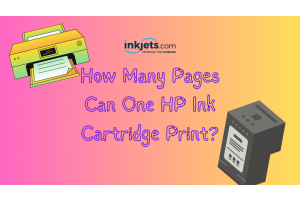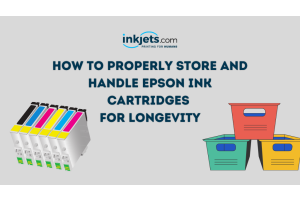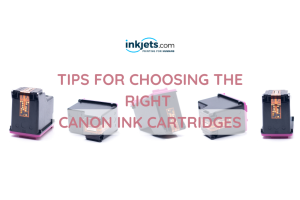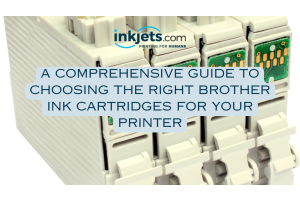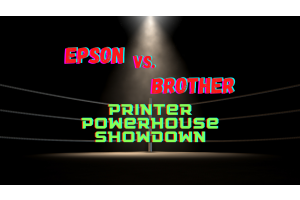
Hello, readers! Welcome to 2024, a year of new beginnings and savvy saving strategies. Let's talk about a common yet often overlooked expense: printer ink. It's amazing how quickly those cartridges need replacing, isn't it? But what if we told you that this year, you could cut those costs significantly? Read on for some simple yet effective ways to save on ink this year.
Tip 1: Opt for Refillable Ink Cartridges
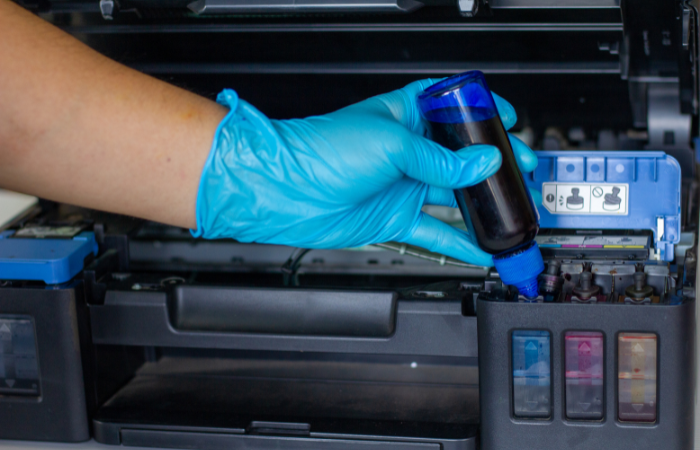

Refillable ink cartridges are not just a cost-effective solution; they're a smart environmental choice too. When you opt for refillable cartridges, you're reducing waste and saving money.
Here are some pointers on how to choose the right refillable ink cartridges:
Check Compatibility with Your Printer: Before diving in, make sure the refillable cartridges are compatible with your printer model. Each printer has its specifications, and using the wrong type of cartridge can lead to poor performance or even damage your printer.
Quality Matters: It's tempting to go for the cheapest option, but when it comes to refillable ink cartridges, quality is key. Look for cartridges that have good reviews and are recommended for consistent performance. A slightly higher upfront cost can mean better print quality and fewer headaches down the line.
Refill Kits and Ink Quality: When selecting refillable cartridges, also consider the quality of the ink you'll use for refilling. High-quality ink ensures the longevity of your cartridges and the overall health of your printer. Some refillable cartridges come with their own brand of ink; if not, seek out reputable ink brands that are compatible.
Ease of Refilling: Consider how easy it is to refill the cartridges. Some models are simpler to refill than others. If you're not comfortable with a more complex refilling process, look for user-friendly designs or cartridges that come with straightforward instructions.
Long-Term Cost Analysis: While refillable cartridges might seem more expensive initially, calculate the long-term savings. Consider the cost per refill and how many times you can refill the cartridges before they need to be replaced. In most cases, you'll find that the cost over time is significantly lower than buying new cartridges each time.
Read: How Much Are You Really Spending on Ink and Toner?
Environmental Impact: One of the biggest advantages of refillable ink cartridges is their reduced environmental impact. By refilling and reusing, you're cutting down on plastic waste and the energy used in manufacturing new cartridges. This makes refillable ink cartridges not only a cost-effective choice but also a greener one.
Warranty and Support: Check if the refillable cartridges come with a warranty or customer support. Good support can be invaluable, especially if you're new to using refillable cartridges.
Remember, investing in refillable ink cartridges is a step towards more sustainable and economical printing practices. With a little research and consideration, you can find the perfect match for your printer and your wallet.
Tip 2: Embrace Draft Mode for Everyday Printing


Draft mode is a feature on most printers that's often overlooked, yet it's a fantastic way to extend the life of your ink cartridges.
Here's a deeper look into making the most of this handy feature:
Understanding Draft Mode: Draft mode is a printer setting that uses less ink than the normal or high-quality settings. It achieves this by printing at a lower resolution and with less ink per page. This mode is ideal for documents where the final quality is not a primary concern, such as rough drafts or internal notes.
How to Access Draft Mode: You can usually find the draft mode option in the 'Print' dialog box of your word processor or other software you're printing from. Look for settings like 'Print Quality' or 'Printer Properties' and select 'Draft' or 'Economy' mode.
Ideal Use Cases for Draft Mode: Draft mode is perfect for printing text documents like rough drafts, notes, recipes, or articles where you don't need professional quality. It's not recommended for final copies of important documents, photos, or presentations where clarity and quality are important.
Combine with Black and White Printing: For even more savings, use draft mode in conjunction with black and white printing. Color ink is generally more expensive than black ink, so this combination can lead to significant cost savings over time.
Monitor Quality Adjustments: While using draft mode, keep an eye on the print quality. If it's too low for your needs, you can adjust the settings slightly. Some printers allow for a customized draft mode where you can choose a balance between quality and ink usage.
Educate Others Who Use the Printer: If you're in a shared environment, like an office or a household, make sure everyone knows about the benefits of using draft mode for everyday printing. A collective effort can lead to substantial savings.
Regularly Check Ink Levels: Even though draft mode uses less ink, it's still a good practice to regularly check your ink levels. This will help you anticipate when a refill is needed and avoid sudden printing interruptions.
Read: How to Check Ink Levels and Monitor Ink Usage with Canon Printers
By incorporating draft mode into your everyday printing habits, you'll find that your ink lasts noticeably longer, helping you save money and reduce waste. It's a small, simple change with a noticeable impact on your printing costs.
Tip 3: Go Digital and Cut Down on Printing


The shift towards digital solutions offers a convenient and eco-friendly way to minimize paper and ink usage.
Here’s a closer look at how going paperless can benefit you:
Opt for Online Billing and Statements: Switching to electronic billing and e-statements for your utilities, bank accounts, and other services not only reduces paper clutter but also cuts down on your need to print. Most companies now offer the option to receive digital statements, and some even provide incentives for switching to paperless billing.
Explore the World of Ebooks: If you love reading, consider transitioning to ebooks. Ebooks are often more affordable than their physical counterparts and can be accessed on a variety of devices, like e-readers, tablets, or smartphones. This not only saves paper but also space in your home.
Digital Note-Taking and Document Management: Replace your physical notebooks and planners with digital alternatives. Apps like Evernote, OneNote, or Google Keep allow you to take notes, organize your thoughts, and manage documents without the need for printing. These tools offer the added advantage of syncing across devices, ensuring your notes are always at your fingertips.
Utilize Cloud Storage for Documents: Instead of printing documents for record-keeping, store them digitally in cloud services like Google Drive, Dropbox, or iCloud. This way, you can access your files from anywhere, share them easily, and reduce the need for physical copies.
Adopt Digital Signatures: For documents that require signatures, use digital signature tools. This eliminates the need to print, sign, and scan documents, streamlining the process and saving ink and paper.
Share Documents Digitally: Instead of printing and distributing documents, share them digitally through email or collaborative platforms like Slack, Microsoft Teams, or Google Workspace. This approach is not only more environmentally friendly but also enhances collaboration and speeds up information sharing.
Educational and Workplace Shifts: Encourage your workplace or school to adopt more digital practices. Suggest using digital handouts, online submission of assignments, and digital collaboration tools for projects and meetings.
Monitor and Evaluate Your Printing Needs: Regularly assess whether you need to print a document or if a digital version will suffice. Often, we print out of habit rather than necessity.
By adopting these paperless practices, you'll notice a significant reduction in your printing needs, leading to savings on ink and paper. Additionally, you're contributing to a more sustainable and environmentally friendly way of living and working in our digital world.
Tip 4: Snag Those Printer Deals


In the world of printing, smart shopping can lead to significant savings.
Here are some strategies to help you capitalize on discounts and special offers from printer and ink companies:
Subscribe to Newsletters: One of the easiest ways to stay informed about deals is by subscribing to newsletters from your favorite printing and ink supply companies. Websites like inkjets.com often send out information on upcoming sales, exclusive discounts, and special offers directly to their subscribers.
Follow Brands on Social Media: Many companies announce flash sales, discount codes, and promotions on their social media platforms. Follow your preferred brands on platforms like Facebook, Twitter, or Instagram to catch these deals.
Check for Rebates: Some manufacturers offer rebates on ink cartridges and printers. These rebates can often be found on the company's website or in the product packaging. Keep an eye out for these offers, as they can lead to substantial savings.
Look for Bundle Deals: Occasionally, companies offer bundle deals where you can buy multiple ink cartridges at a discounted rate. These bundles are especially useful if you use your printer frequently and go through ink quickly.
Shop Around Holidays and New Year: Sales and promotions are common during holiday seasons and the beginning of a new year. This is an excellent time to stock up on ink cartridges at a lower cost.
Consider Remanufactured or Compatible Cartridges: Many third-party companies offer remanufactured or compatible ink cartridges at a fraction of the cost of brand-name cartridges. These can be a great option, but make sure to read reviews and ensure they are compatible with your printer.
Join Loyalty Programs: Some stores and brands have loyalty programs that offer points, discounts, or other perks for frequent shoppers. Joining these programs can lead to exclusive deals and savings over time.
Compare Prices Online: Before making a purchase, compare prices across different retailers. Sometimes, online stores offer better deals than physical stores, or vice versa.
Set Price Alerts: Use price-tracking tools or apps to set alerts for specific products. This way, you'll be notified when the price drops to a level you're comfortable with.
Read: How to Buy Discounted Printer Ink
By staying alert and proactive, you can take advantage of various discounts and promotions, making your ink purchases more affordable. Remember, a little effort in monitoring these deals can lead to significant cost savings in the long run.
Tip 5: Take Good Care of Your Printer


Taking good care of your printer is essential not just for its longevity but also for efficient ink usage and high-quality printing.
Here are some practical tips for maintaining your printer:
Regular Cleaning of Print Heads: One of the most crucial maintenance tasks is cleaning the print heads. Over time, ink residue can clog the print heads, leading to poor print quality and wasted ink. Most printers have a built-in cleaning function that you can run to clear any blockages. Consult your printer's manual for specific instructions.
Read: Quick Guide to Cleaning Printheads
Proper Alignment of Cartridges: Misaligned cartridges can cause streaky or blurry prints, leading to unnecessary ink waste as you attempt to reprint documents. Most printers offer a simple process for aligning the cartridges, which can usually be initiated through the printer's settings or maintenance menu.
Use High-Quality Paper: The type of paper you use can affect your printer's ink efficiency. Low-quality paper can absorb more ink or cause paper jams, leading to increased ink consumption. Invest in good-quality paper for better results and less ink waste.
Keep Your Printer Covered: Dust and debris can clog your printer and affect its performance. When not in use, cover your printer or store it in a clean, dust-free area to prevent these issues.
Turn Off the Printer Properly: Always turn off your printer using the power button rather than just unplugging it. This allows the printer to cap the print heads properly, preventing them from drying out and getting clogged.
Regular Use to Prevent Clogging: If you don’t use your printer regularly, the ink can dry out and clog the print heads. Try to print something at least once a week to keep the ink flowing smoothly.
Be Proactive with Cartridge Replacement: Replace ink cartridges as soon as they run low. Running a printer with low ink can damage the print heads and affect print quality.
Consult the User Manual: Each printer model has specific maintenance needs. Consult the user manual for recommendations on maintenance routines and troubleshooting common issues.
By following these maintenance tips, you can ensure your printer operates efficiently, uses ink more effectively, and produces high-quality prints. It does require a bit of effort and regular attention, but the payoff is a well-functioning printer and savings on ink in the long run.
Conclusion
So, there you have it—five straightforward ways to save on printer ink this year. These tips don't just help your wallet; they're also kinder to the environment. Give them a try, and you might be surprised at how much you can save. Why not kick off your new year by checking out affordable ink options at inkjets.com? Here’s to a year of smart savings and positive changes!




